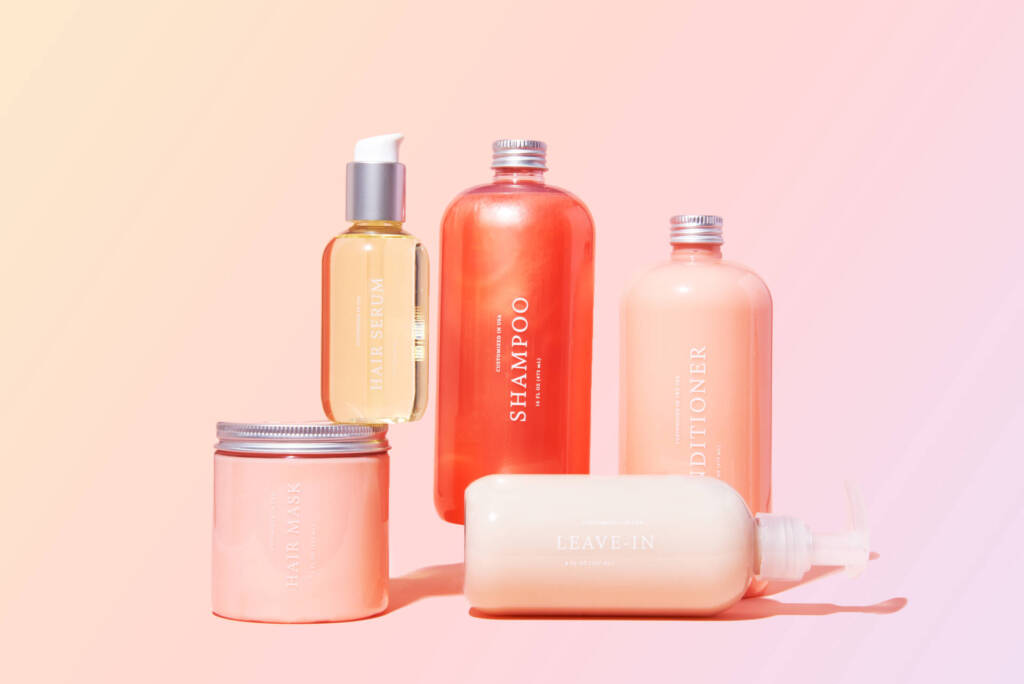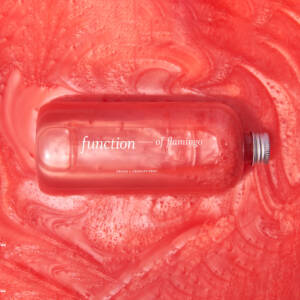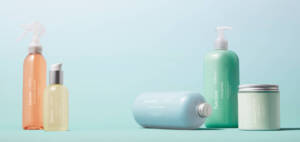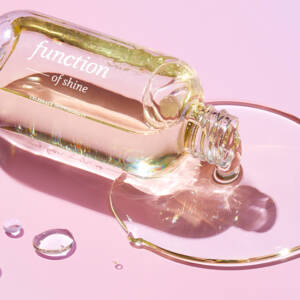Disclaimer: The information provided is not intended as medical advice. For any medical concerns, always contact your doctor.
Figuring out how to strengthen hair might be the ultimate quest for anyone looking to improve the appearance of their hair. It doesn’t matter whether you have long curly hair, a short coily ‘do, wavy mid-length tresses, or straight hair down to your waist. No matter how long or short your hair grows, you want strong resilient locks that outlast any damage.
However, we can’t always get everything we want out of our hair. If we want to dye it a shockingly bright hue, straighten it until it looks smooth as glass, or curl it until it’s as coily as a corkscrew, we may have to sacrifice some of its strength. Or do we?
We’d like to believe that with the right hair products, treatments, and habits, anyone’s hair can regain the strength it’s lost from years of stress and hair damage. But to do this, we must first understand how to combat the signs of weak hair and what might be causing it in the first place.
Why Is My Hair Weak?
Before you figure out how to strengthen hair, you have to understand what has weakened it. Let’s review some potential culprits of weak hair.
Breakage
Hair that breaks off or falls out easily can seem impossible to deal with. Simply curling or straightening it can cause sections to become completely fried, eventually breaking off when you try to brush or style your hair. Breakage is quite the opposite of the strong resilient hair that most people want to have.
Hair breakage can be measured by the change in diameter from the root of the hair shaft to the ends. If the thickness of the hair strand decreases dramatically from hair root to tip, this is an indicator of poor hair health and strength.
Breakage can be caused by mechanical abrasion (aka brushing your hair too roughly), chemical processing (hair coloring), blow-drying, heat styling, sun damage, or overall poor hair care habits. All of these things put some degree of stress on hair, causing its physical and structural characteristics to change and weaken.
Hair coloring can be particularly damaging to the hair cuticle as it can strip the protective layer from the hair shaft, thereby weakening the hair and causing split ends and dryness. Flat irons and blow-dryers enforce thermal stress onto the hair, which can significantly damage hair keratin (a type of protein) and contribute to breakage. Heated styling tools can also lead to high hair porosity, which dries out your hair and makes it harder to retain moisture.
Pro Tip: Instead of opting for a blow dry, allow your hair to air dry instead. Follow our guide on how to manage high porosity hair.
Tangles
Many people struggle to keep the ends of their locks from forming annoying knots. Others find that as soon as they go from wet to dry hair, their hair snarls up into an unflattering bird’s nest. And then there are those who find their hair to be in a constant tangled mess that can only be cured by sporting a messy bun.
Needless to say, constantly detangling your locks is an inconvenient indicator that you may have weak hair. But where do these tangles come from? A study on knotted hair found that tangles concentrated towards the ends of the hair were most likely caused by aggressive brushing, scratching, combing, or washing. These actions cause the hair to form knots at the tips of the strands which can eventually lead to split ends.
Certain hair types are more prone to tangles than others, particularly those with coily type 4 hair. Even when brushed gently, the dense spiral shape of coily hair is easily tangled and worn down by the pull-and-release action that brushes and combs enforce upon the hair.
Pro Tip: Use a wide-tooth comb to detangle hair and check out our how-to guide on managing coarse hair.
Thin Hair and Hair Loss
Some people have bountiful thick hair while others have sparse thin locks that look like they’re in a permanent state of “wah wah wah.” At times, thin hair looks flat, deflated, and totally void of volume — no wonder it’s often perceived as the opposite of strong, healthy hair.
It’s worth noting that there’s a difference between having naturally thin hair and thinning hair. Having naturally thin hair isn’t inherently a bad thing. In fact, it can be quite beneficial — this hair type takes much less time to style and dry. On the other hand, thinning hair is often linked to hair loss, which can be caused by deficiencies in protein, amino acids, zinc, and iron. It can also be attributed to a low intake of antioxidants such as vitamin C and vitamin E.
In this scenario, proper antioxidant intake can help ward off oxidative damage that contributes to hair thinning and loss. If you don’t have a healthy diet rich in antioxidants like fruits, vegetables, and grains, this could be affecting the low density of your hair.
Pro Tip: Talk to your doctor or dermatologist if you notice your hair falls out frequently or you’re concerned about hair loss. In the meantime, there are easy ways to make thin hair look thicker.
3 Tips on How to Strengthen Hair
Now that we know some of the major causes of weak hair, let’s shift focus on how to strengthen hair. So where to start? How about with deep conditioning?
Invest in Deep Conditioning
The moisturizing powers of deep conditioners can help alleviate common signs of hair damage such as frizz, dryness, tangles, and breakage. This is because deep conditioners can penetrate the hair cuticles into the hair strand‘s inner cortex. As such, you can restore the lack of hydration that makes hair appear frizzy, rough, or dull.
Function of Beauty’s customized hair mask is full of hydrating and conditioning ingredients such as Japanese sake extract, argan oil, and jojoba ester oil. Try these simple tips to get the most out of this deep conditioning hair treatment:
- Use after shampooing and conditioning
- Apply with a wide-toothed comb to avoid tangles and evenly spread the product
- Coat from the mid-shaft to the ends of your hair
- Avoid roots and do not leave in overnight
- Leave on for the recommended amount of time, then rinse
Use this hair mask in lieu of your daily conditioner once or twice a week as part of your regular hair care routine to further protect dry, damaged hair.
Enrich Your Diet
A great way to increase hair strength is to enrich your diet with protein and vitamin-rich nutrients. As we mentioned, hair thinning can be linked to low levels of protein intake. And since your hair is made of a protein called keratin, it’s important to fill up on protein-rich foods like eggs, milk, and legumes. It’s also beneficial to consume foods rich in vitamin E and vitamin C such as avocado, sunflower seeds, and citrus.
Omega-3 fatty acids are also contributors to hair health as scientific studies have indicated that increasing your intake can help improve hair density and fight hair loss. While there is no cure-all for hair loss, foods like almonds, chia seeds, and spinach are high in omega 3 and may help you grow stronger, thicker hair.
Use a Shampoo and Conditioner That Improves Elasticity and Resilience
Your hair is at its best when left in its natural state. No dye, no heat, no crazy hairstyles that twist your hair into breakage-inducing positions. But of course, we know it’s hard to follow this rule all the time. That’s why it’s essential to use a shampoo and conditioner combo that nourishes your natural hair while boosting resilience and elasticity.
Function of Beauty’s personalized shampoo and conditioner is formulated with naturally derived and synthetic ingredients customized to give you stronger-looking hair. When you include “strengthen” as one of your hair goals, your formula will include ingredients like horsetail extract and evening primrose oil, which can protect your hair from breakage.
It’s Possible to Achieve Strong Hair
There are a variety of reasons why hair might seem weak — perhaps you’re dealing with breakage, tangles, or thin hair. Whatever the case, the good news is that there are steps you can take to get closer to your strong hair goals.
While following a healthy diet is key, there are other habits you can adopt to avoid weak-looking strands. Take our hair quiz to create customized hair products perfectly suited for your unique hair type and hair needs. Whether you want curl definition, color protection, volume, shine, or a combination of these goals, Function of Beauty’s custom hair products can be a stepping stone on your way to healthier-looking hair.





